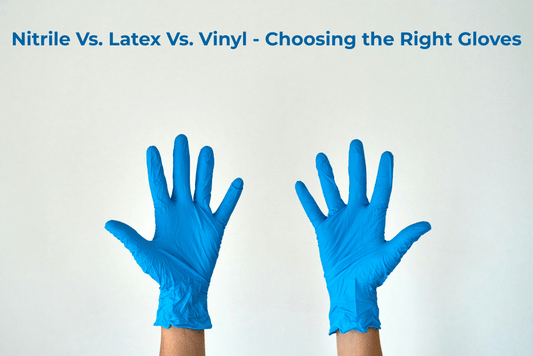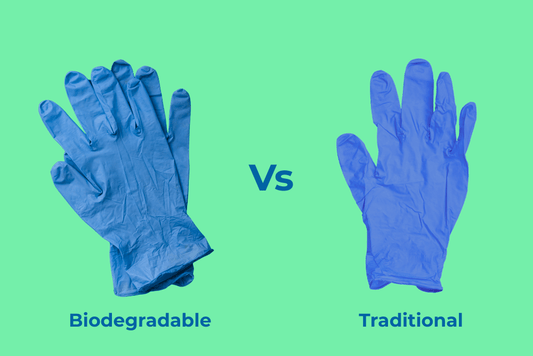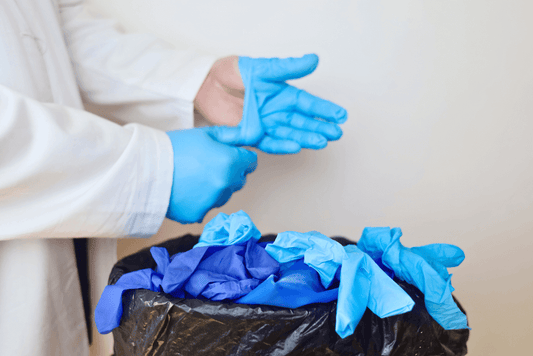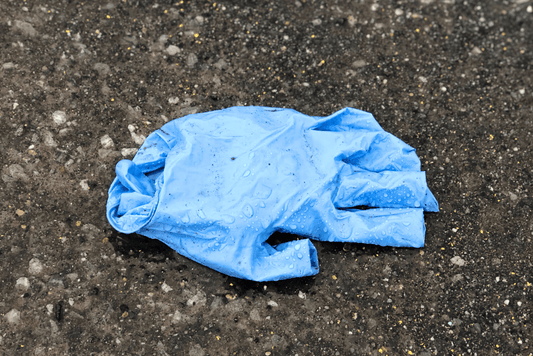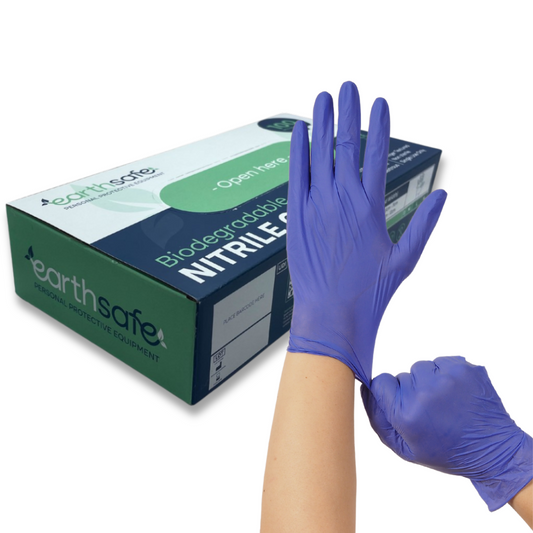How to Dispose of Disposable Used Gloves? Step-By-Step Guide
Disposable gloves are now an everyday item. They appear in hospitals, factories, restaurants, and homes alike. Their practicality, comfort, and protection have made them indispensable. Yet, as usage continues to rise, one question lingers: how should they be disposed of responsibly?
This article explains the practical disposal routes for disposable gloves, the factors affecting their waste classification, and the best ways for individuals and organisations to reduce their environmental footprint.
Understanding Disposable Gloves Before Disposal
Disposable gloves come in several types, nitrile, latex, and vinyl being the most common. Each material offers different strengths and levels of protection. Nitrile resists chemicals and punctures, latex offers flexibility, and vinyl provides affordability for light tasks.
Before disposal, the glove’s use context matters. A pair worn for cleaning is not the same as one used in a medical environment. Gloves exposed to biological or chemical materials must be handled as hazardous waste, while clean or lightly used gloves may follow general waste procedures.
Understanding the type and level of contamination helps determine the safest and most appropriate disposal method.
Can Disposable Gloves Be Recycled?
Technically, yes. However, recycling them is not straightforward. Most household recycling programs reject disposable gloves due to contamination risks and material composition. Mixed polymers make them difficult to process in conventional recycling systems.
Specialised recycling programs, often provided by commercial waste handlers, collect used gloves for separate processing. These gloves undergo cleaning, shredding, and conversion into other products such as mats, tool handles, and outdoor furniture.
These services are valuable but limited. They are usually accessible to hospitals, laboratories, and large industrial users who can collect gloves in bulk. For smaller users or households, local recycling options may not yet exist.
General Waste Disposal
For most individuals, general waste remains the practical route. Used disposable gloves that are not medically or chemically contaminated can safely go into non-recyclable bins.
Waste management facilities often incinerate such materials. Modern incineration processes are designed to convert waste into energy, reducing landfill reliance while controlling emissions. Although this method consumes energy, it remains a better alternative than uncontrolled dumping.
To reduce waste volume, users can avoid unnecessary glove use. For instance, certain light tasks may not require disposable gloves at all, or reusable gloves can be a better fit.
Disposal in Healthcare and Industrial Settings
In medical and laboratory environments, disposable gloves used for patient care or sample handling are classified as clinical waste. These gloves may carry pathogens or biological residues. Regulations require them to be disposed of in designated clinical waste containers, typically yellow or orange bags marked for incineration.
Industrial sites using chemicals follow similar protocols. Gloves contaminated with oils, solvents, or hazardous compounds must be segregated and disposed of through licensed hazardous waste contractors.
Failure to follow these standards risks contamination and legal consequences. Therefore, organisations must maintain clear disposal policies and proper staff training.
Reuse and Reduction Possibilities
Disposable gloves are intended for single use, but that does not eliminate the opportunity to minimise waste. In low-risk environments, gloves can sometimes be reused briefly if they remain intact and uncontaminated. For example, gloves used for household cleaning may serve for more than one task before disposal.
Organisations can also manage waste by training staff to avoid discarding gloves unnecessarily. Replacing disposable gloves with durable alternatives, rubber or PVC types, for non-hazardous activities can further cut waste output.
Correct storage also matters. Gloves damaged by heat, moisture, or poor handling may be discarded prematurely. Keeping them in dry, shaded areas extends their shelf life before use.
Industrial-Scale Recycling Programs
Several waste management providers, including Earth Safe PPE, now offer glove recycling programs for commercial clients. These systems provide labelled containers to collect used gloves. Once full, the containers are shipped to specialised recycling facilities.
Here, gloves are processed through controlled cleaning and shredding stages. The resulting material is blended into recycled compounds used in manufacturing durable goods.
Such programs allow businesses to manage waste sustainably and reduce landfill contributions. While participation requires a service fee, the long-term environmental and reputational benefits often outweigh the cost.
Barriers to Glove Recycling
Despite progress, barriers still exist. The main challenge is contamination. Gloves often come into contact with food, chemicals, or medical residues, complicating safe recycling.
Sorting also poses a challenge. Mixing nitrile, latex, and vinyl gloves can disrupt recycling processes. Proper segregation requires awareness and infrastructure at the collection point.
Finally, the economic side cannot be ignored. Collecting, transporting, and processing disposable gloves costs more than the material’s recycling value. Expansion of glove recycling will rely on shared responsibility among manufacturers, waste handlers, and policymakers.
Policy and Regulation Trends
Governments and environmental agencies are increasingly paying attention to glove disposal. Some regions already require organisations to separate disposable gloves from other waste streams. Others offer incentives for recycling participation or the use of biodegradable materials.
Manufacturers are beginning to design gloves with faster degradation rates. Research into biodegradable nitrile and hybrid materials shows promise, shortening decomposition time without compromising performance.
As policy pressure grows, businesses will be expected to adopt documented waste management systems that include PPE recycling or certified destruction services.
Responsible Actions for Individuals and Organisations
For households, practical steps include disposing of gloves in general waste if no contamination exists and avoiding excessive purchases. Buying in moderation prevents wastage due to material degradation over time.
Organisations, on the other hand, should conduct waste audits to track glove usage and disposal volumes. Data-driven reviews reveal areas for improvement, such as storage, staff training, and reuse strategies.
Collaborating with recycling partners adds value, too. Establishing formal waste collection processes supports environmental goals and aligns with corporate sustainability commitments.
Innovation continues to reshape how disposable gloves are managed after use. Recycling systems are expanding, and biodegradable materials are becoming viable. Combined with growing awareness among consumers and industries, these changes signal a positive shift in glove waste management.
While incineration and general waste disposal remain the primary routes today, structured recycling programs are paving the way for a more sustainable future.
Every responsible step, sorting, recycling, or reducing usage, contributes to less environmental burden. Proper disposal is not only about compliance; it reflects care for the planet.
Upgrade your operation confidently! Our FDA-compliant biodegradable nitrile gloves deliver the protection and assurance you need to meet the highest food safety standards, all while providing a simple, positive step toward sustainability. Contact our sales team immediately for verified product certifications and bulk pricing: Call +44 7482 212945 or visit our contact page.


